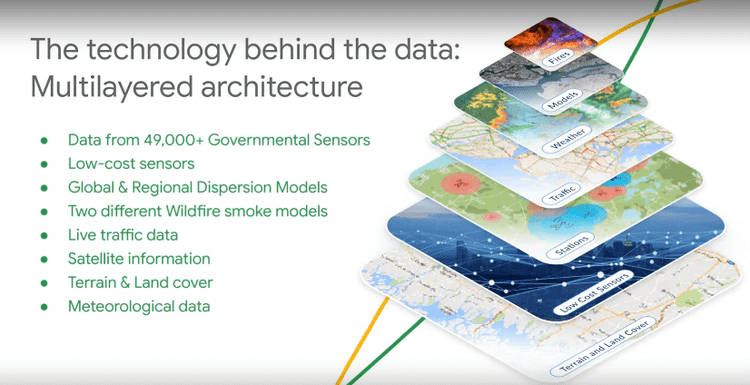Leveraging Google Maps and Environmental Data to Improve ...

We’ve all used Google Maps or a technology like that in our life. However, many healthcare organizations probably don’t realize all of the ways that Google Maps API can be used to improve the patient experience. Plus, did you know that Google also has a number of environmental APIs that are available? To learn more about both of these topics, I watched a recent webinar on “Google Maps adds value to health care organizations” that was hosted by Hexagon, a partner of Google.
On the webinar, experts from Hexagon and from Google shared more details about the Google Maps API, the environmental APIs from Google, and how those can be used in healthcare.
Some of the use cases listed here were pretty obvious, but I was really interested to learn about how they’re using these technologies to address value based care.
The provider locator use case for Google Maps is the obvious one. It’s easy to map your providers on a Google Map. It’s intuitive for patients and provides easy access to navigate to the healthcare provider as well.
Plus, Google Maps has a number of advantages for helping patients find a provider. The two that stand out for me is that it’s mobile friendly and that it’s scalable to pretty much any location. I remember using Google Maps in Jordan in the Middle East and it worked just as good as in a big city in the US. Basically, Google Maps can scale to any location you need as you scale your healthcare organization.
One of the use cases pointed out in the webinar that I hadn’t thought about was using Google Maps API for address validation. We all know how frustrating it can be to send patients something and have the wrong address. While we’d love it all to be digital, having a proper address is still important for many healthcare organizations.
I didn’t realize how you could leverage places on Google Maps to be able to do things like filter by specialty when a patient is using Google Maps on your website to search for a provider. That just makes sense to do.
The webinar then shifted to talk more about the environmental impact on health. Some of the costs they shared above are just astounding. 6.7 Million premature deaths linked to air pollution every year. That’s a big health problem.
I’ll admit that I didn’t know that Google had created a really sophisticated set of data using a multilayered architecture to be able to collect and share important environmental data like air quality and pollen. The webinar also noted that the pollution data they update hourly since it changes quickly even street by street. The pollen data they update daily since it isn’t collected as often.
I’d be really interested to know the various corellations between Air Quality and ED visits. Plus, as someone who suffers from allergy, I can deeply understand the value of Pollen data.
This is one example of this air quality and pollen data being used in healthcare to address asthma. Keeping patients engaged on the app is a big challenge. Having regularly updated environmental data is one way to keep them coming back.
They also shared a number of other healthcare use cases for this data. The most powerful was ResMed who was able to reduce hospitalizations by 57% and reduced rescue inhaler use by 84%.
Thanks to Hexagon for putting together this webinar with the Google Maps team. It certainly opened my eyes to a bunch of data that is available from Google that I didn’t realize they had. And it’s great to see some healthcare organizations starting to use it. I’d love to hear what you think of this data and how you could see it being used in healthcare. Share your thoughts in the comments and on social media.
Full Disclosure: Hexagon is a Healthcare Scene sponsor.
Get Fresh Healthcare & IT Stories Delivered Daily
Join thousands of your healthcare & HealthIT peers who subscribe to our daily newsletter.




![Saved Places on Google Maps Disappeared [6 Tested Fixes]](/_largethumb/uploads/news/111/11191/8/11191863-saved-places-on-google-maps-disappeared-6-tested-fixes.jpg.webp)
![Saved Places on Google Maps Disappeared [6 Tested Fixes]](/_newsthumb/uploads/news/111/11191/8/11191863-saved-places-on-google-maps-disappeared-6-tested-fixes.jpg.webp)





















































